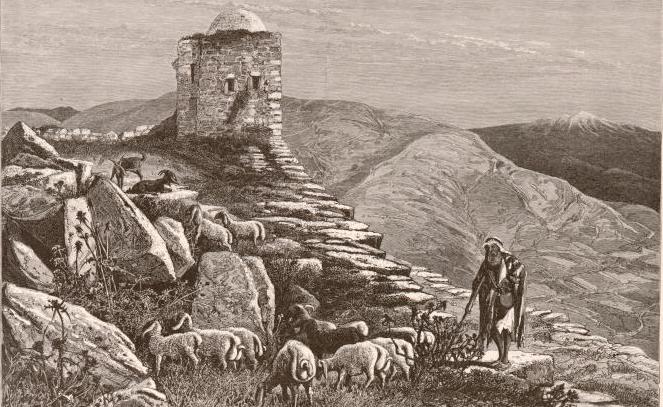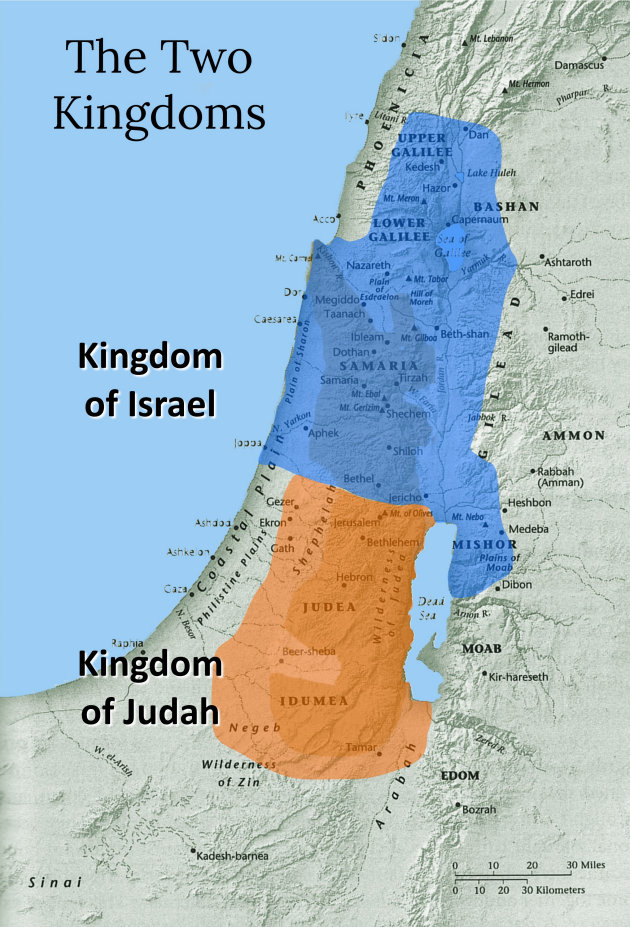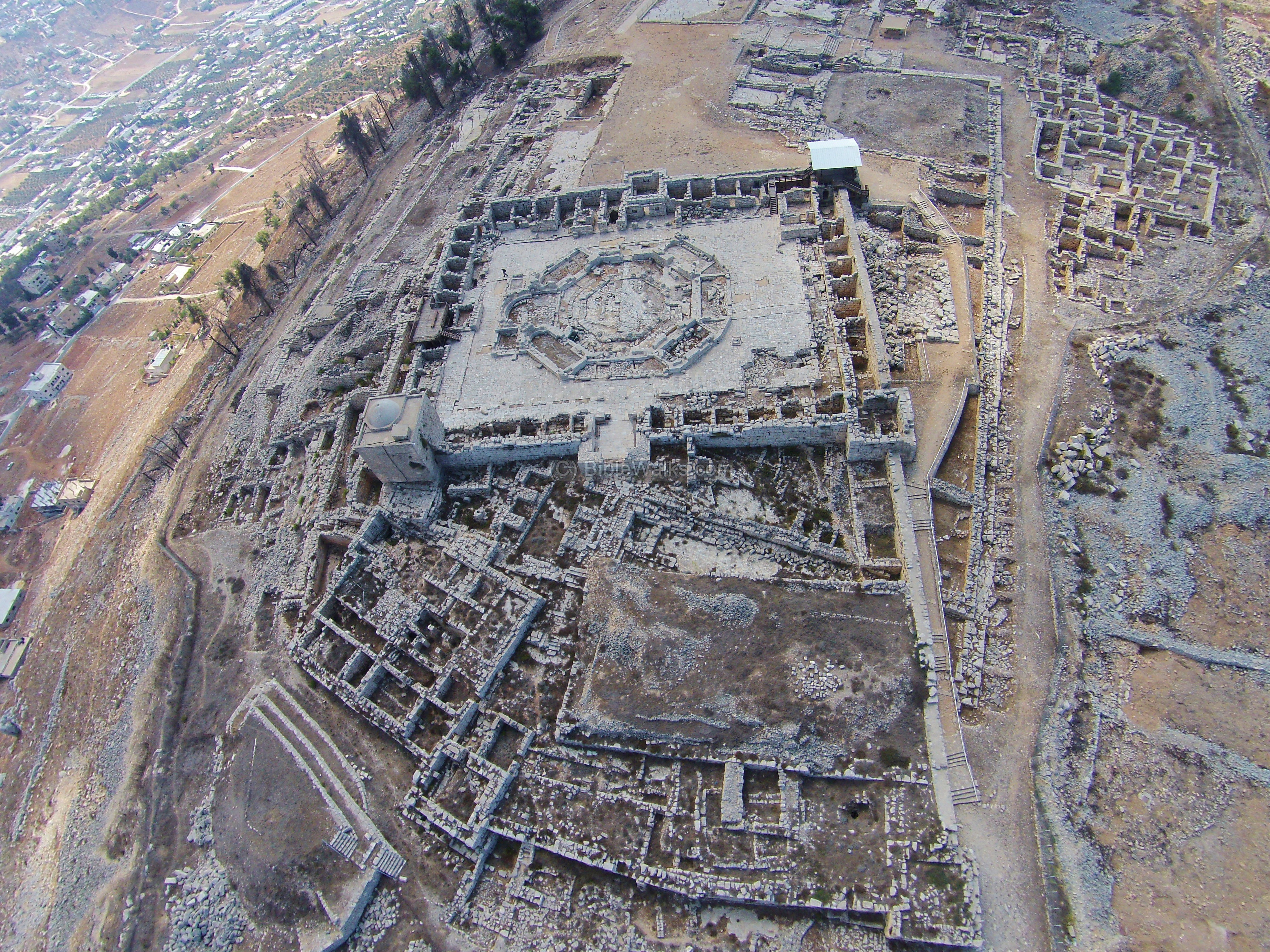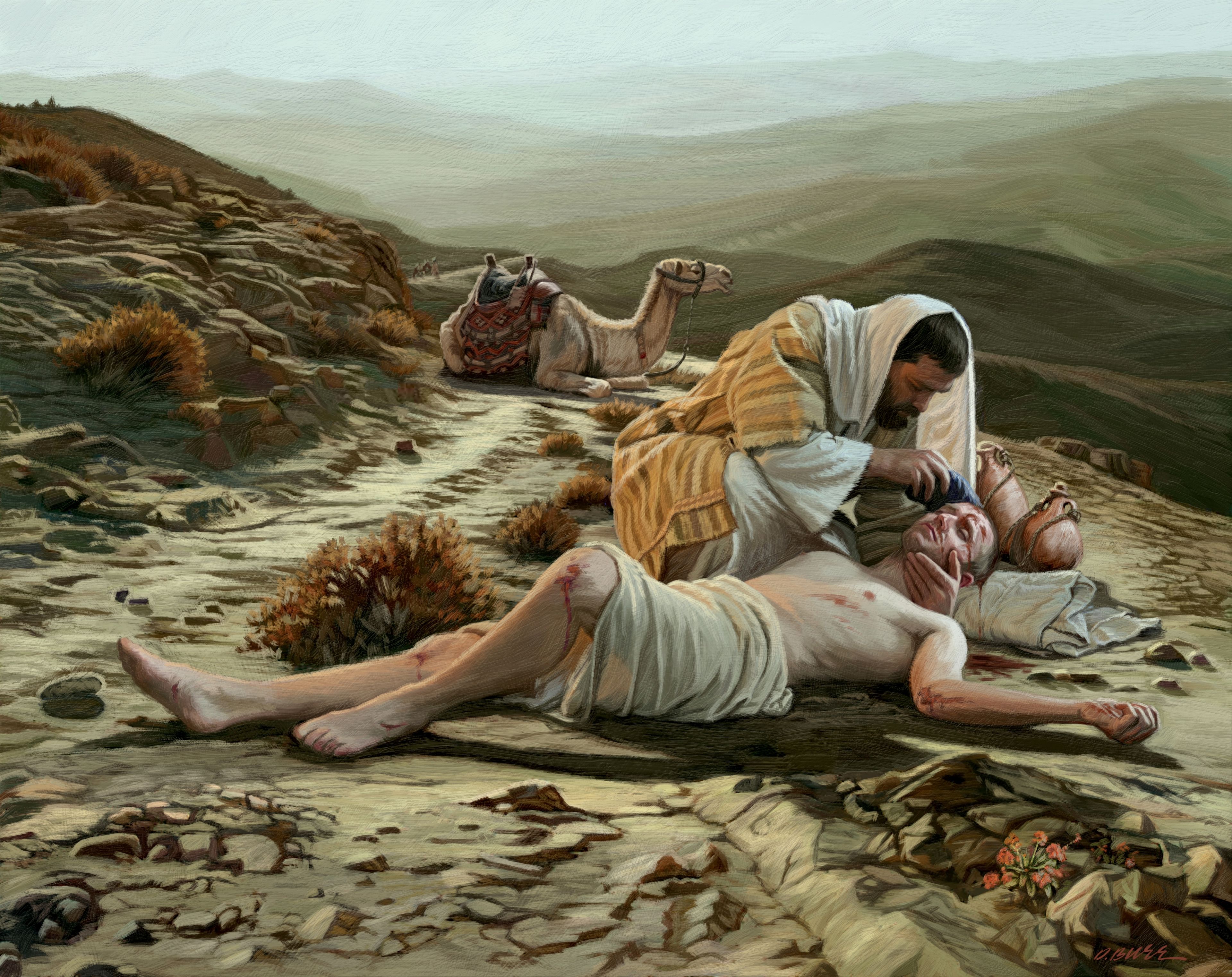
Matthew 28:16-20 (Matins)
Ephesians 2:4-10
Luke 10:25-37
From Nazareth
"Can anything good come from Nazareth?"
In the Name of the Father and of the Son and of the Holy Ghost. Amen.
The Orthodox Church is a living, unbroken, and life-giving stream of holy tradition.
As Athanasius wrote of Orthodoxy:
"What Jesus taught, the Apostles preached, and the Fathers kept."
From the Apostles, the Fathers, and down through our Patriarchs and Metropolitans today,
we have been vouchsafed The Way of God and His Plan for humankind.
These fierce men have ignored
countless fads, innovations, and trends that have spawned sects.
Our bishops have protected The Way
and
(when necessary)
have
driven out false religion.
This holy work of defending the faith has deep roots,
the deepest roots.
For they go to the nature of Christianity itself
and
to the foundations of Jesus' teachings and before
that to the Holy Scripture he cited.
Let us stand back to take in the scope of this.
Turning open the first page, we read
"In the beginning ...."
and
immediately find ourselves
ascending high mountains
set against the sea.
For behind us is
primordial chaos
and
before us is Almighty God bringing
the heavens and the earth into being.
"What is this Book?!"
we exclaim.
Surely, we are in the midst
of a most holy and sublime scene.
Yet,
the book itself has been tainted
—
sewn together
from various other texts.
Beginning in the eighteenth century,
German scholars studying the Hebrew Bible
began to detect these textual boundaries revealing
"edges" among other texts from ancient historical periods.
The consensus today
is that a central
"Yahwist text"
(describing YHWH)
is surrounded by other literary piece-parts
arising from alien backgrounds and competing agendas.
That the Hebrew Bible was revised
under compulsion
of King Josiah (d. 609 BC) and then further revised a few years later
during the Babylonian Captivity (597 BC)
under the influence of Mesopotamian religious leaders
is a premise widely accepted today.
As my Old Testament professor, John J. Collins, told my class:
the staunchest biblical fundamentalist is hard pressed
to explain how
Moses wrote the Pentateuch when it depicts his own death and the events that transpired afterwards.
Meantime,
the Books of Esdras
(which have standing in the Orthodox Church)
depict the Holy Scriptures being burned following the return after the Captivity
and
re-composed from scratch.

The Hebrews that had been carried off to Babylon
—
perhaps a third of the population of Judea
—
returned to their historical homeland two generations later.
But the ones who were returned were utterly unlike their grandparents
who had been transported to Nebuchadnezzar's capital city.
They no longer spoke Hebrew but rather Mesopotamian-Babylonian Aramaic.
They no longer practiced ancient Hebrew religion but a new religion,
which would be named after themselves.
Perhaps most important,
they no longer possessed the most holy heart of their former lifeworld:
the First Temple, built by Kings David and Solomon,
which had been modeled on the Tabernacle at Mt. Sinai,
connecting them to YHWH.
Instead,
a new cult
would be centered in a Second Temple whose construction was underwritten
and
directed by Mesopotamian administrators.
The religion of the Patriarchs was dead .... at least in the historical Southern Kingdom of Judah.
And a new religion was born.
The epic scale of these events for the millennia that followed takes our breath away.
But during the sixth century BC, the aims were modest by comparison:
a Mesopotamian colony was established
on the eastern shore of the Mediterranean.
It would be named after its historic geography, Judah.
Its customs and religious rites would, henceforth, be known as Judah-ism.
And its people would be called Jews.
If one-third of the population of Judah was carried off to Babylon,
then
two-thirds were not.
We may easily imagine
that none of those from the Northern Kingdom
of historical Israel
were touched by this radical and reformative experience.
Thus,
with the institution of Judaism a great boundary now cut
across the Levant,
following the contours of an ancient boundary
with Judah to the South and the other Tribes to the North.
Each would view themselves as being a superior civilization in the eyes of God.
The area to the south, with Jerusalem as its capital, would become inured
to world civilizations
—
the Mesopotamians,
the Hellenized world of Alexander the Great after that,
and
finally the Romans.
Northerners, no doubt, would would have viewed the South as being "sell-outs" (we would say):
phonies
(.... though not according to their own wishes, we should add.
These sea-change experiences were thrust upon them.
By contrast, the Northern Kingdom would have seen itself as being the true civilization,
faithful to the Patriarchs,
faithful to the Monarchy of David,
and
living stones of the First Temple,
a repository of the faithful,
keeping alive the Hebrew lifeworld.
And they would build their own Temple,
atop Mt. Gerizim, two miles from the ancient capital of the Kingdom of Israel,
Shechem.
We can imagine the tensions that ensued from this dynamic,
for nothing less than identity and authenticity were at stake.
It is impossible for us to pick up the Bible today and not be plunged into the restive sectarianism
that arose from all of this.
The world we encounter in the Gospels is seething with hatred.
The mere mention of the word resurrection, for example, causes a room full of
Sadducees and Pharisees to erupt into rage (Acts 23:6-9).
And the Gospel of St. John is (among other things)
a chronicle of unrelieved persecution by "the Jews" directed at
all things connected to Jesus,
a Northerner
of the ancient Kingdom of Israel.

St. John's Gospel opens with "the Jews" sending out priests and Levites
to challenge St. John the Baptist.
John continues
with
Jesus calling The Twelve,
nearly all from the historical Kingdom of Israel.
An inner circle is formed first:
two pairs of brothers
—
Andrew & Simon
and
then
James & John
—
from Capernaum
in Galilee.
Next,
two friends are called,
Philip and Nathanael,
from Bethsaida, also Galileans,
of whom Jesus says, significantly,
"an Israelite indeed, in whom there is no guile!"
implying deception inherent in Judah.
Bartholomew and Simon the Zealot are from Cana of Galilee.
Matthew-Levi is from Nazareth.
And
the rest are from villages in Galilee .... except
one,
the Disciple Judas,
a variant spelling of "Judah."
(By tradition, Judas is from a small village south of Jerusalem.)
So here are the Apostles:
twelve Israelites
including Jesus
and
one representative of the Southern Kingdom
historically known as the Kingdom of Judah.
That is,
the Brotherhood Jesus forms are Hebrews.
That one Jew has been included suggests welcome and charity.
But will it be received?
Will it be requited?
This is the question posed by this configuration.
Those who are not persuaded of this point of view will point out that
Jesus and the Disciples pepper their speech with Aramaic,
inferring from this that
Aramaic was their chosen identity and language.
I reply by sharing that I pepper my daily speech with Yiddish,
but this neither means that I am an Ashkenazi Jew nor that my native language is Yiddish,
much less my identity.
The great classicist Werner Jaeger pointed out sixty years ago
that whenever Jesus cites the Scriptures it is always from the Greek Septuagint (LXX).
This is a complex point that we cannot take up right now.
Let us move on, then, by mentioning two things.
First, Jesus preferred the Greek Bible
in a world that spoke Greek throughout the historical empire of Alexander the Great,
from Saul of Tarsus and to common folk in the streets of downtown Rome.
And when these men committed their experiences to written form,
the Evangelists, St. Paul, and all the others, chose Greek.
The second main point has profound implications for us.
The LXX points back to the ancient Hebrew lifeworld.
Yes I know that this translation from Hebrew to Greek does not predate the return of the Judeans from Babylon.
In fact,
it was translated
fully three centuries after that return.
But it is the manner of translation that has towering importance for us.
At the direction of Egyptian pharaoh,
Ptolemy II Philadelphus (285-247 BC),
six translators from each of the Twelve Tribes of Israel were
asked to render the Hebrew texts into Koine Greek
(the common-coin language of the Hellenized world).
That is,
the LXX represents the only, ever systematic "download"
of the mind and soul of the ancient Hebrew lifeworld.
For that is the nature of language.
Language becomes embedded with the artifacts of culture that shape the structures of consciousness.
Translation is not a flat equation, mapping one two-dimensional word to another.
Translation is a rich matrix bristling with
the sensibilities, culture, and religious beliefs of those engaged in these transactions.
Inevitably, it is the process of pushing categories and concepts of mind
through the forms of cultural and religious beliefs and conventions.
What comes out the other side is inevitably cultural.
By contrast,
the production of the Hebrew Bible we have today
(the so-called Masoretic text)
is thoroughly a Jewish product.
It arose from a culture of Pharisees,
later called Rabbis,
who expressed their Scripture in a way that enshrines the customs, beliefs,
indeed,
the entire lifeworld
that began evolving following the return from Babylon.
The scholar Margaret Barker brilliantly comments,
Why in the world do we continue to draw parallels to that Pharisaic-Rabbinical world
in order to explain Christianity
when that world explicitly rejected all things related to Christ ....
even tried to erase all traces of them?!
Do you see?
Two different and opposing lifeworlds.
As an aside, the Orthodox Church
frowns upon
Bibles whose Old Testament is not based on the LXX.
(The Hermitage uses the New King James version for worship
supplemented by the Holy Apostles Convent translations for scholarly purposes
as
an additional perspective on the Greek.)
As we open the New Testament,
then,
we behold many sects
with one great boundary cutting across all:
on one side, Judah;
on the other, Israel.
We would be right to think of Israel as the scattered flocks Jesus describes
in need of a shepherd.
By contrast,
the Jews formed a monolithic society having highly developed structures of authority.
We might say in reading the Gospel Passion narratives, "too many shepherds!"
The Judeans predominate over the other tribal remnants
not least because of their allegiances with a succession of power brokers,
foreign invaders
from Nebuchadnezzar to Caesar Tiberius.
St. John keeps them ever before us in his Gospel
—
mentioning "the Jews" sixty-six times in a book of twenty-one chapters.
He describes them as being
other, alien, and depicts them
in terms of stratagems and betrayals.
And we recall that Judas' other name, Iscariot, means "betrayer."
As we have seen,
each civilization
is rooted in its own distinct, religious cultus:
the Jews in the Temple on Mt. Zion
and
the Israelites in the Temple on Mt. Gerizim.
The Northerners are conscious of their rootedness in the Patriarchs:
"Jacob dug this well," St. Photini tells the Lord Jesus standing two miles from their Holy Mountain.
"And we Northerners worship on Mt. Gerizim"
(Jn 4:4-26).

What are differences between these two religions?
How did the rites carried out on Mt. Gerizim differ exactly from those carried out on Mt. Zion?
Wouldn't we love to have been the fly on the wall.
We probably shall never know.
And as scholars like
Margaret Barker have pointed out,
without
the discoveries made in Qumran of the Dead Sea Scrolls,
we wouldn't know any of this,
not grounded in hard evidence.
We certainly know that the hatred of Jews for their Hebrew cousins was sufficiently
intense that a company of men from Judah destroyed
the Temple on Mt. Gerizim in the year 2 BC,
shortly before the Advent of God, we might say,
in the great sweep of human history.
The Hebrews had continued in the spirituality
of the First Temple of Kings David and Solomon.
Their religion was grounded in personal transformation.
It grew out of a theocracy in which the vocation of Israelite king
is to ascend through a process of deification to near identity with God
reaching its apex in the Holy of Holies.
Its spirituality then is profoundly interlaced with terms like kingship and kingdom.
And we recall that Jesus' own title was Kyrios, meaning "King,"
a title reserved for YHWH in the LXX.
(You know,
we translate this word "Lord" in English,
but in our only sure reference, the LXX, it is used to mean "King" referring to YHWH.)
Jesus' signature phrase "the Kingdom of Heaven"
was utterly foreign to the culture of the Zion Temple
and
found nowhere in the Jewish books.
And we recall that the vocation which Jesus identified for the
Disciples was that of royal thrones.
We hasten to add that the figure of the High-priest / King of the First Temple was not an idol to be worshiped
but rather an exemplar to be emulated.
That is,
these rites form the foundations of Christian theosis.
By contrast,
the rites of Judaism were plainly rooted in animal sacrifice,
a primary cultic activity of Neo-Babylon and Mesopotamia.
Through blood sacrifice,
union with God was to be achieved
on the basis of a quid-pro-quo act:
this
bull or goat or dove
in exchange for that
divine appeasement.
There is nothing personal in it.
As we picture the burning of the Holy Books
upon the inauguration of the Second Temple,
a haunting image rises before us,
an image from the rebellious plain at the foot of Mt. Sinai:
"Here are your gods, O Israel!"
☦

Our Gospel lesson this morning is frankly sectarian.
Such a story in our time might begin,
"There were three men:
a priest,
a rabbi,
and
a Methodist minister ...."
But this is no joke.
Its purpose extends to the meaning of life and to eternal life.
On one side,
we have a priest and then Levite;
on the other,
finally, a Samaritan.
The story itself,
as first-century listeners would have known,
poses a question of blood.
For the detail of the
Jericho Road
summons before us a scene of rocky ground having sharp edges.
Any man beaten by robbers and left unconscious would be bleeding.
This is emphasized by Jesus with the details that we was stripped
of all of his clothes and thrown down on rocky ground.
And we have the further detail that the Samaritan
explicitly binds his wounds,
which means "staunches the bleeding."
This is the point of the Jewish priest and the Jewish Levite giving
the man a wide berth
and
hurrying past him.
For if they should touch him,
in their belief,
they would become ritually unclean:
unable even to enter the Zion Temple
for a protracted period of time.
Meantime,
a Samaritan comes on to the scene.
He, obviously not impressed by Mesopotamian superstition,
rushes to the side of the bleeding man.
He is an Israelite,
steering by different stars.
His belief system is
manifestly grounded in
virtue, compassion, and goodness.
That is,
his religion is one of personal transformation
and
has nothing to do with blood
or blood sacrifice.
When the Samaritan "Woman at the Well,"
St. Photini, raises the question of "true religion"
(contrasting Jewish religion with Northern, Hebrew religion),
Jesus replies:
|
".... the hour is coming, and now is, when the true worshipers will worship the Father
in spirit and truth; for the Father is seeking such to worship Him. God is Spirit, and
those who worship Him must worship in spirit and truth."
(Jn 4:23-24)
|
Here,
Jesus lays it out plainly:
transformation,
rising above our animal nature unto our spiritual selves:
becoming one with the Father,
emulating our High Priest / King, Who is is One with the Father.
Here is true worship.
Indeed,
in one, brief parable,
told in a few sentences,
Jesus lays out whole subject of our salvation.
Preoccupation with blood
will not honor God's commandments,
then or now.
Much less
will Temple rites centered on slaughter please God.
Jesus' attitudes toward the Zion Temple
we have seen
—
a rage
—
by the way, an unprecedented rage
—
displayed in turning over the cages of doves
and
driving purveyors of the same out of the Temple with a whip He has made.
Famously,
He announces that He will replace this Temple
(this place of trade, He calls it: trading a this for a that)
with His own Transformed Self.
When the Disciples see His Transfiguration,
they are beholding the future Temple,
the living stones in which they will participate.
He begins His public ministry with one word: Metanoeite! (Mk 1:15).
"Be transformed!"
Consider the general historical scene.
The Temple on Mt. Gerizim
has been destroyed
and,
with it,
the last cultic center for practicing Hebrew religion.
God then sends His Son into the world,
Who says that He been sent to gather the scattered flocks of Israel
(He does not mention Judah).
From the beginning,
He teaches that true religion is about personal transformation
and
nothing to do with goats and bulls.
St. Paul will later write a kind of summary of Christianity to the Church at Rome:
.... be transformed by the renewing of your mind, that you may prove what is
that good and acceptable and perfect will of God.
(Rom 12:2)
|
The Apostles teach that the new Temple will be living stones built unto a spiritual house
(1 Peter 2:5, Eph 2:19-20, Rom 12:5),
which,
upon reflection,
is what the First Temple had been all along.
In fact,
this is a fitting description of Eden,
which was depicted upon the walls of the First Temple.
From the beginning,
this has been God's
Way,
called The Way in the first century AD.
Pristinely expressed in Eden,
it was inaugurated again in the generation of Noah,
then begun once more with the carving out of a Promised Land.
It was commemorated and ritually enacted in the First Temple during the eleventh century BC.
The ultimate aim is always the same:
transformation of mind and soul unto resemblance to our Creator.
It continues to be open to us.
What is this religion?
What shall we call this religion?
It is not Christian Evangelicalism.
It is not Roman Catholicism.
It is Orthodoxy:
the One Holy Catholic and Apostolic Church.
She continues in the true faith of Abraham,
in the Patriarchs,
in the First Temple.
And she bows before her High-priest and King,
crying out among the beggars of the Gospel world,
"O Son of David, have mercy upon us!"
In the Name of the Father and the Son and the Holy Spirit.
Amen.




